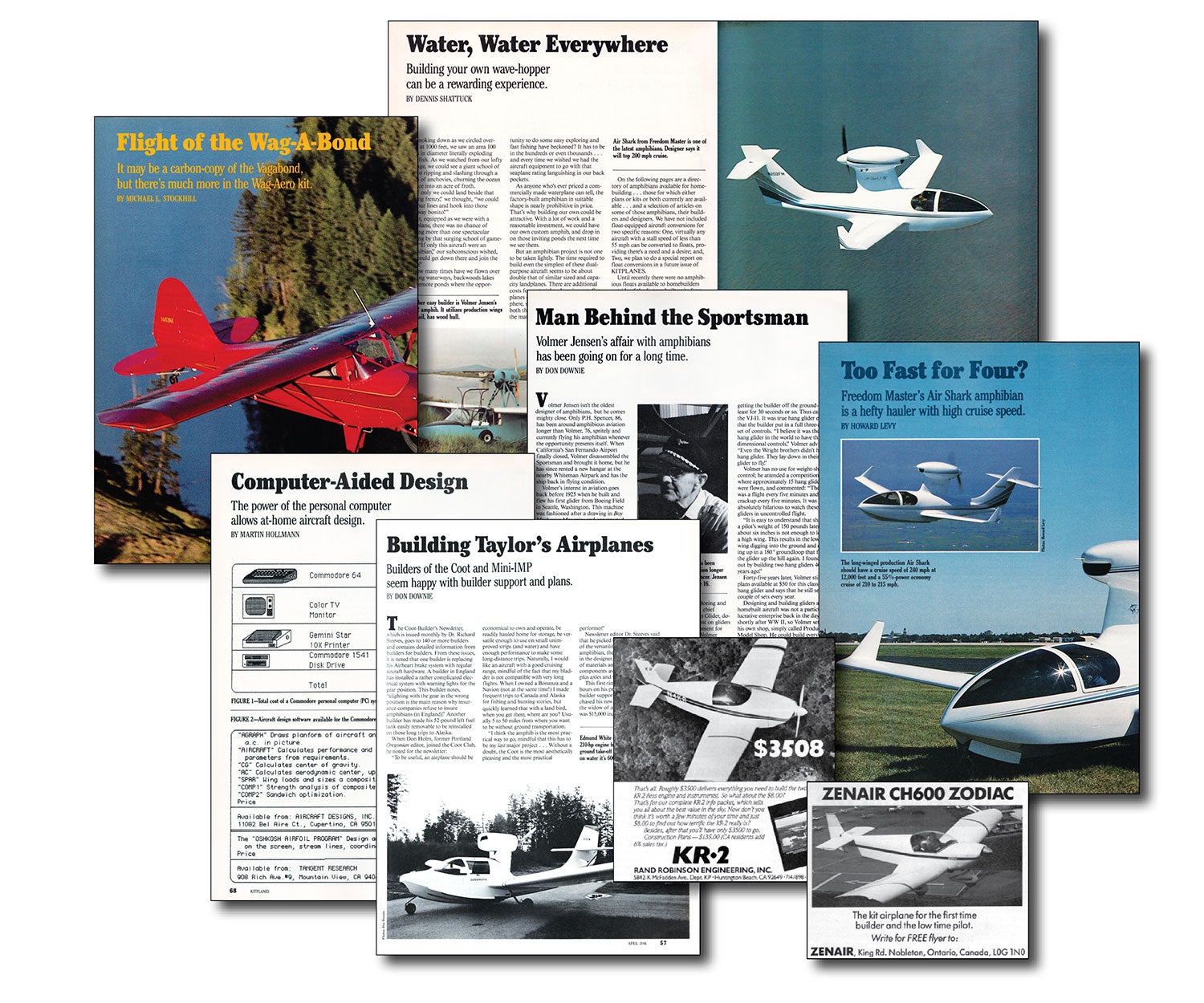 Our April 1986 cover featured the Air Shark as part of a collection of 14 “build-yourself flying boats.” A two-page buyer’s guide helped illustrate the price ranges involved, from kits-only versions on the high end—the Freedom Master Air Shark 1 at $26,000 and the Seawind 2000 at $25,000—to plansbuilt designs starting under $100—including the Sun Ray 200 at $65 for plans and the Collins Aero Dipper for $100.
Our April 1986 cover featured the Air Shark as part of a collection of 14 “build-yourself flying boats.” A two-page buyer’s guide helped illustrate the price ranges involved, from kits-only versions on the high end—the Freedom Master Air Shark 1 at $26,000 and the Seawind 2000 at $25,000—to plansbuilt designs starting under $100—including the Sun Ray 200 at $65 for plans and the Collins Aero Dipper for $100.
Writer Howard Levy posed the question: Is the Air Shark amphibian “too fast for four?” The sleek four-place hull aircraft carried its 200-hp Lycoming IO-360 in a pod above and behind the canopy and featured retractable tricycle gear. Designed by Arthur Lueck and fabricated by sons Rob and Ron (who would go on to be the main man at Comp Air), the Air Shark used its smooth fiberglass shape to get the short-wing version to a 205-mph cruise.
Don Downie reported on another four-place amphib, the Spencer Air Car. By 1986, the Air Car had already been around for 16 years, with a reported 175 sets of plans sold by then and “at least 10 flying.” Builder William Goetz “had 60 hours of flight time logged on his Air Car when we talked with him,” says Downie in the feature. “He says the cruising speed is only 125 mph but that its prop is not working correctly and is now in the Hartzell shop to have the beta (reverse thrust) valve adjusted.” Goetz said that “the whole construction process was interesting and educational. It was a pleasant experience and I never got tired of or bored with the project.”

Author Michael Stockhill recalled an effort he and partner Harris “Woody” Woods had made to obtain rights from Piper to build kit versions of the venerable Vagabond aircraft only to be shot down by Piper’s attorneys. A few years later, though, he happened upon the Wag-A-Bond, Wag Aero’s Vagabond kit. Soon, “I was tooling around in Allen Potts’ fresh new 150-hp Wag-A-Bond, which looked better built to me than anything that left the Piper factory in the 1950s, and performed with a verve that was never part of the character of the original factory-built airplane,” he said. In the end, Potts says he spent about $14,000 building his Wag-A-Bond, in part by using an O-320 that had come from a Robinson helicopter. The Wag-A-Bond is still available as plans with partial kits.
Inside the issue was a note that RANS had just introduced the S-7 Courier STOL airplane. Powered by a Rotax 503, the S-7 featured two seats in tandem, an 83-mph cruise speed and a promised build time of 150 hours. The complete kit was to sell for $9895. A couple of pages later, an ad for the Rand-Robinson KR-2 claimed that $3508 would “deliver everything you need to build the two-place KR-2 (less engine and instruments).”
Perhaps nothing better reveals the march of time than Martin Hollmann’s feature on using computers for “at-home aircraft design.” He noted that for the investment of $910, you could start with a Commodore 64 computer monitor, printer and disk drive to run aircraft-design software. He concluded the story noting that the PC-based design tools were not a substitute for a human’s creative ability but also pondered, “Can you imagine what [the Wright brothers] could have done if they had a PC and the present knowledge of aerodynamics at their disposal?”













